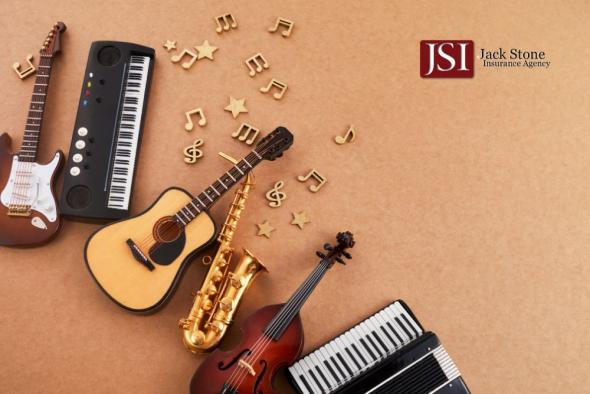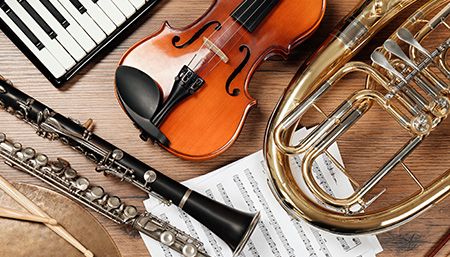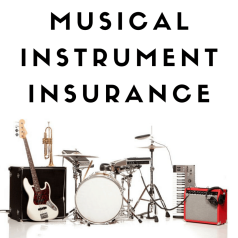
2025 has seen a resurgence in live music across Europe and America, with independent artists, session musicians, and touring bands relying more than ever on their professional instruments—custom guitars, handcrafted violins, or vintage drum kits—that are as vital to their livelihoods as they are valuable. Yet, the daily risks of musical work— a saxophone damaged in transit to a gig, a piano stolen from a home studio, or a synthesizer fried by a power surge during a festival set—often fall through the cracks of standard insurance. Home policies cap coverage for instruments at a few hundred euros or dollars, while general travel insurance excludes gear used for commercial work. Specialized Instrument Insurance has emerged as a critical lifeline, tailored to the unique needs of modern musicians.
This insurance delivers three core layers of protection. First, damage and theft coverage addresses the most common risks. Unlike generic plans, it covers instruments in all scenarios: transit (whether in a tour van, train, or airplane), live performances (including backstage storage), and studio use. Coverage limits align with professional gear values—ranging from two thousand to twenty thousand euros in Europe and three thousand to thirty thousand dollars in the United States—enough to replace a high-end electric guitar (typically four thousand euros or six thousand dollars) or a professional-grade cello (ten thousand euros or fifteen thousand dollars). For example, a jazz pianist in Paris whose grand piano is damaged during a venue move could recoup eight thousand euros for repairs, while a country guitarist in Nashville whose custom banjo is stolen from a gig venue might receive five thousand dollars for a replacement. Many policies also cover accidental damage, such as a drummer’s cymbal cracked mid-performance or a flutist’s instrument dropped backstage.

Second, performance interruption protection—a 2025-focused feature—compensates musicians when a damaged or stolen instrument forces them to cancel or reschedule gigs. It covers lost fees (often up to one thousand euros per show in Europe or one thousand five hundred dollars in the U.S.) and additional costs like renting a replacement instrument last minute. A indie band in Berlin that had to cancel a sold-out show because their bass guitar was stolen, for instance, could recoup two thousand euros in lost revenue and three hundred euros for a rental bass. This is particularly valuable in 2025, as live music bookings are at a five-year high, and missed gigs mean not just lost income but also damaged relationships with venues.
Third, accessory and repair coverage extends protection beyond the main instrument to essential gear: guitar pedals, drum heads, sheet music stands, and even custom cases. It also covers specialized repairs—such as restringing a classical guitar by a luthier or fixing a vintage keyboard’s circuit board—that generic insurance deems “unnecessary.” In Europe, policies often include partnerships with certified instrument repair shops, offering discounted rates, while U.S. plans may reimburse up to five hundred dollars for emergency repairs during tours.
The market for this insurance has grown to match musicians’ evolving needs. In Europe, Insure4Music (UK) offers “GigGuard” plans with per-performance coverage (ideal for part-time musicians) and annual policies for full-time tourers, including coverage for international shows. In Germany, HUK-Coburg’s “Musiker-Schutz” (Musician Protection) adds coverage for instrument loans—critical for session players who borrow gear. In the United States, MusicPro Insurance specializes in vintage and custom instruments, with appraisals included in the policy, while Lemonade’s “Instrument Guard” uses AI to process claims in under forty-eight hours, letting musicians get back to performing faster. A 2025 survey by the European Musician’s Union found that eighty percent of insured musicians reported “less anxiety” about their gear, compared to just thirty-five percent of those without coverage.
When choosing a policy, musicians should prioritize three factors. Coverage alignment: Ensure the plan matches the instrument’s use—touring musicians need broader transit coverage, while studio musicians may focus more on theft and power surge protection. Valuation accuracy: Get a professional appraisal for high-value or vintage instruments to avoid underinsurance; many insurers require this for gear over five thousand euros or seven thousand dollars. Exclusion clarity: Check for gaps like coverage during extreme weather (e.g., a guitar damaged in a tour van flood) or intentional damage (standard exclusion), and confirm the policy covers commercial use (not just personal).

For musicians in Europe and America, Specialized Instrument Insurance isn’t just about protecting property—it’s about safeguarding their creative identity and income. In 2025, as live music thrives and instruments become more integral to professional success, this insurance turns the uncertainty of musical work into security. No longer do musicians have to choose between investing in quality gear and worrying about losing it; instead, they have a safety net that lets them focus on what they do best: making music.





